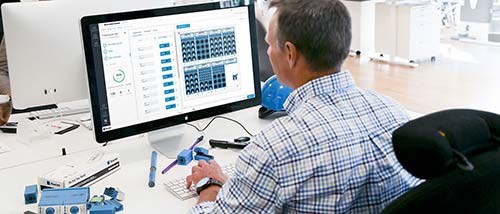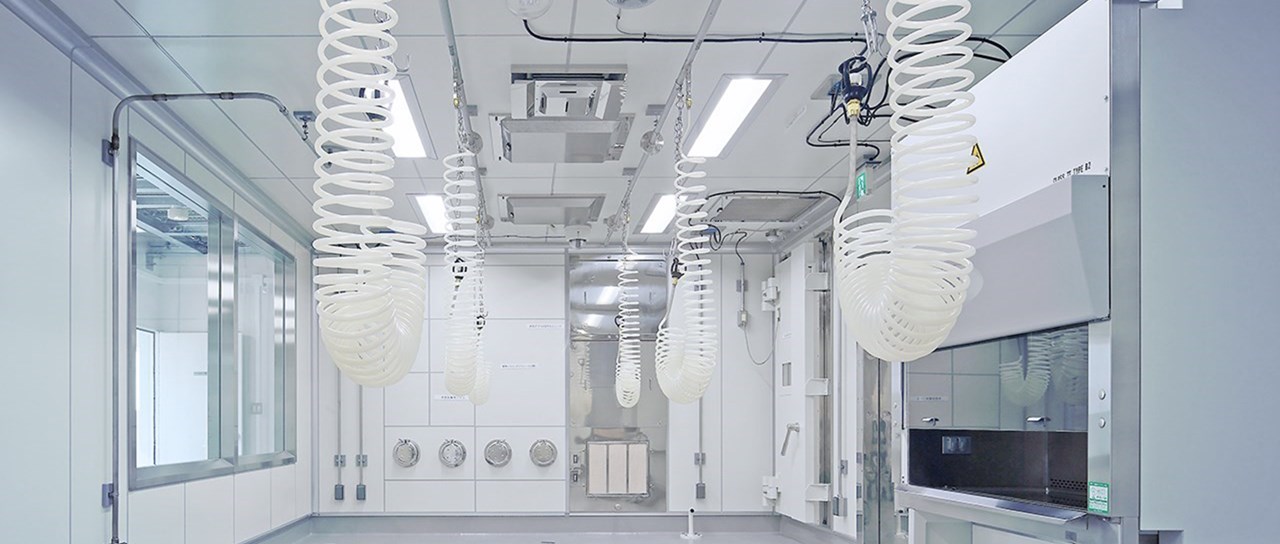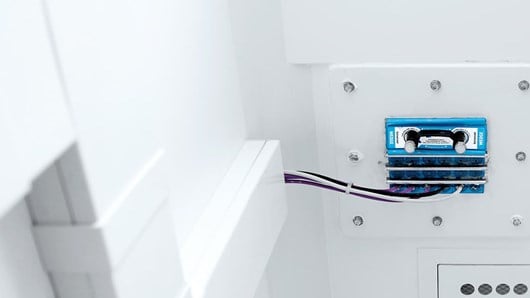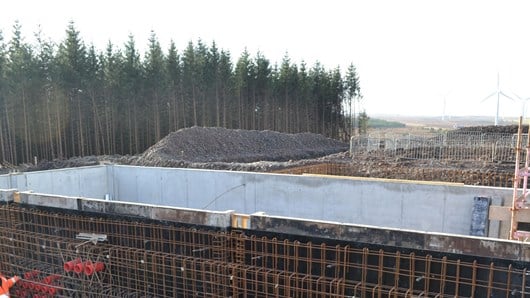Acoustics play a very important role in building design and construction. Two important areas in particular are laboratories and semiconductor manufacturing facilities. Many of these laboratories and facilities house sensitive and expensive equipment, such as high-power electron microscopes. Electron microscopes are used in the semiconductor industry for circuit editing and analysis. In the field of life sciences, these high-power microscopes are used in research, disease diagnosis, pathology and drug/vaccine development.
Interference from acoustics can cause abnormalities in the high-resolution TEM image, scanning distortions and loss of energy resolution[1]. Today’s electron microscopes perform extended duration imaging for 3D reconstructions, producing fantastic images and data that was previously impossible on older systems. But, creating these images takes many hours or even days. Unwanted interference could be costly in both time and resources. Therefore, sensitive equipment requires careful architectural design of the surrounding area to prevent interference[2].
Sound & Acoustics
Sound is described as vibrations in the air that move in waves. Acoustics in architecture mean improving sound in environments.
Environmental factors
Environmental factors can greatly influence sensitive equipment. For example, vibrations, ambient soundwaves, barometric pressure changes, pipe temperature changes, grounding issues, and electromagnetic fields all contribute to the performance of sensitive equipment.[3]
The STC rating
Sound Transmission Class (STC) is the measurement of the ability of a wall or floor assembly to isolate airborne sound and prevent it from passing from one Class (STC) side to the other.
A higher STC-rated wall generally blocks more noise from transmitting through a partition.[4]
Calculating the STC
To calculate the STC, it is important to understand the main components of this measurement:
- Frequency – the measurement of the tone or musical note of the sound
- Decibel – a measurement of sound intensity; volume
- Transmission loss (TL) – the measurement of the decibel difference on either side of the structure
STEP 1. Measure the “transmission loss” on either side of the structure being measured. This measures the volume (dB) difference on each side respectively.
STEP 2. Transmission loss values are tested individually against eighteen of the most common frequencies spanning a range between 125 Hz and 4000Hz. These measurements are used to map out points on a graph that then form a curve. This curve can then be compared against standard STC reference.[4]
| STC | What can be heard |
| 25 | Normal speech can be understood |
| 30 | Loud speech can be understood |
| 35 | Loud speech audible but not intelligible |
| 40 | Loud speech audible as a murmur |
| 45 | Loud speech heard but not audible |
| 50 | Loud sounds faintly heard |
| 60+ | Good soundproofing; most sounds do not disturb neighboring residents.[5] |
Sound leakage
A wall’s STC rating is also dependent on penetrations through the wall. All holes and gaps should be filled and electrical enclosures hermetically sealed for sound isolation to be effective. Inadequately sealed partitions and unsealed pipes offer paths for sound and significant leakage.[5]
Noise reduction solutions
To reduce the noise from entering and exiting a room – and thereby increasing a wall’s STC rating – one must do any or all of the following:
- Increase the structural mass of the walls, floor and ceiling
- Effectively seal the openings for electrical cables, water, and gas
- Effectively seal the gaps surrounding doors and windows[3]
In summary, acoustics are a vitally important factor to consider in the field of architecture. This is enhanced in laboratories and other advanced facilities. As equipment becomes more powerful and sensitivity levels increase, the need to improve acoustics also increases.
|
CITED WORK 1. Martínez-Tejada, et. al. Acta Microscopica Vol. 23, No.1, 2014, pp. 56 – 69 2. Souza, Eduardo. "Keys To Improve Architectural Acoustics: Sound Absorption and Diffusion" 12 Apr 2019. ArchDaily. Accessed 27 Jan 2021. <https://www.archdaily.com/912806/understanding-sound-absorption-and-diffusion-in-architectural-projects> ISSN 0719-8884 3. “Laboratory Design for High-Performance Electron Microscopy”, Microscopy Today, Vol. 12, Issue 3 May 2004 <https://www2.lbl.gov/today/2004/May/21-Fri/MAOkeefe_lab_design.pdf> 4. ASTM E413-16, Classification for Rating Sound Insulation, ASTM International, 2016, <www.astm.org> 5. Bradley, J. S. (August 2001). Deriving Acceptable Values for Party Wall Sound Insulation from Survey Results. The 2001 International Congress and Exhibition on Noise Control Engineering. The Hague, The Netherlands. |




